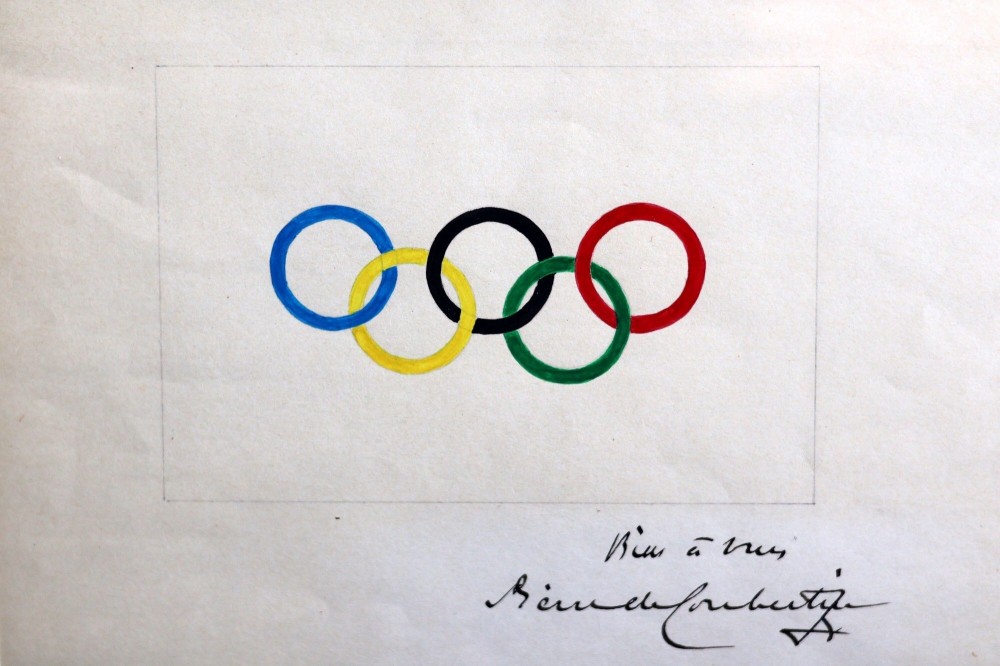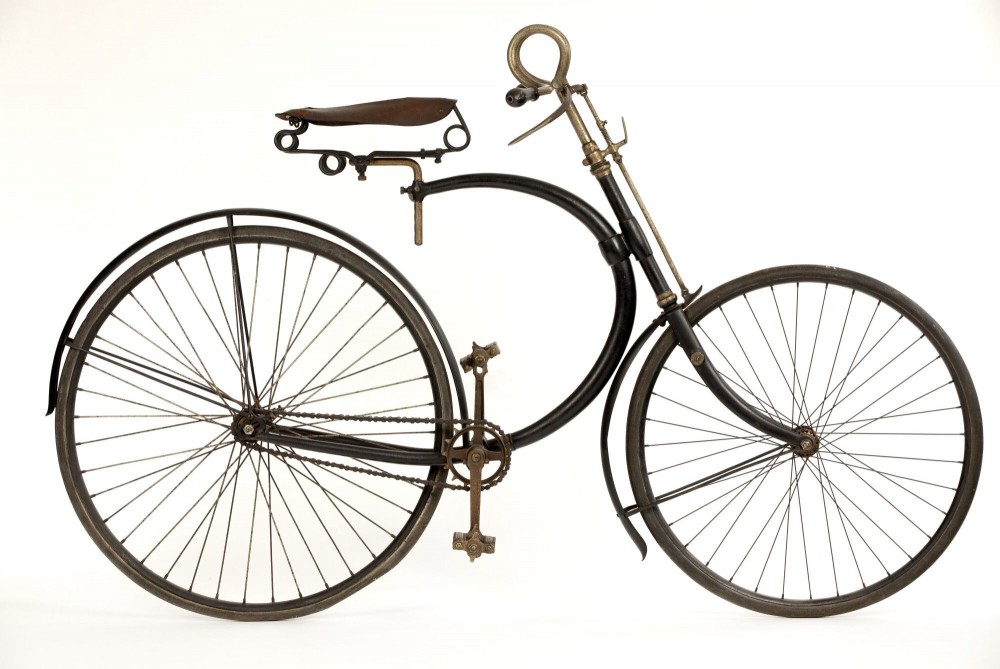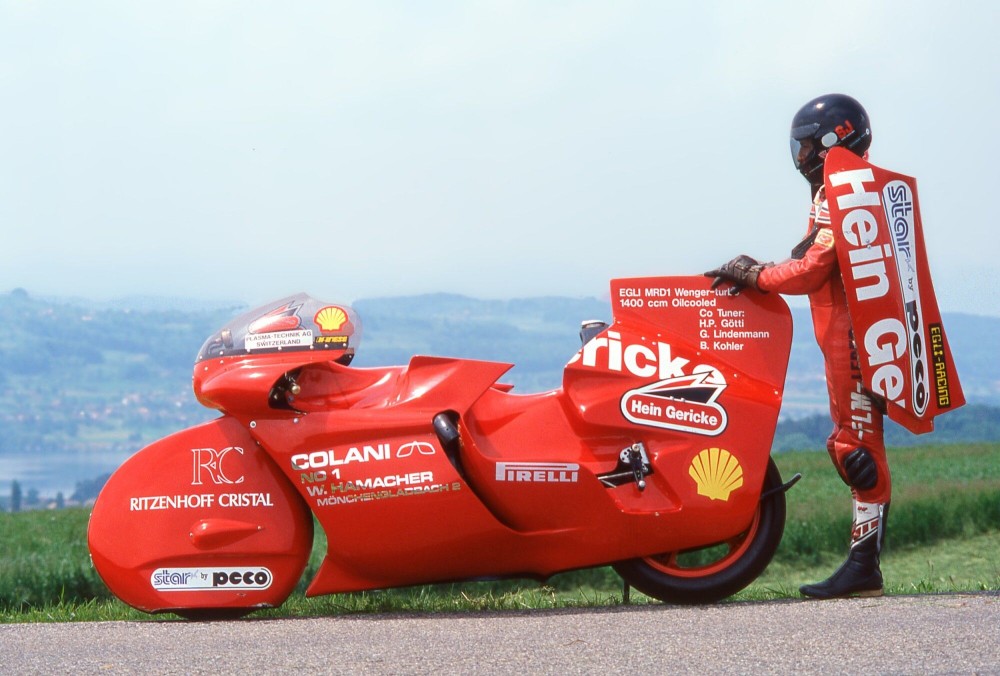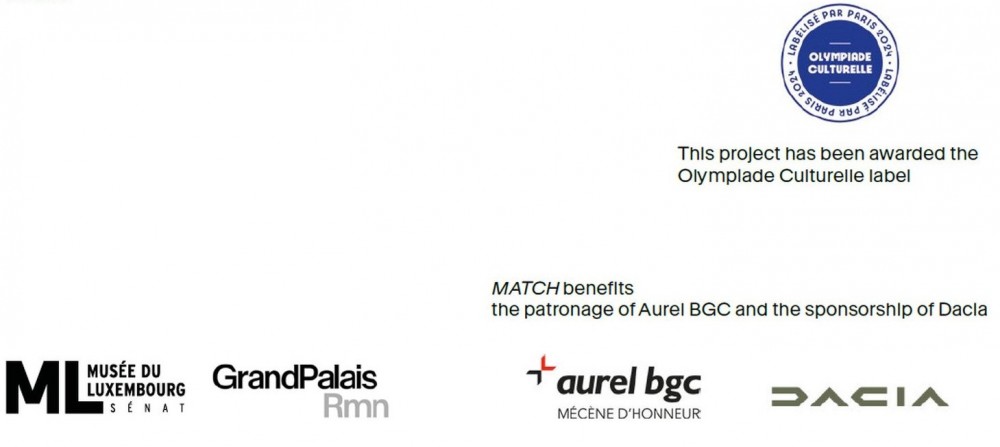
Pierre de Coubertin
The Olympic Rings
Original drawing
1913
21 x 27,5 cm
Graphite and gouache on card
© Private collection
In total ca. 150 exhibits : unique historical pieces and signature icons, commercial products, prototypes, models, commissioned pieces, drawings, prints, projections, films, interactive applications.
The exhibition MATCH: Design & Sport - A Story Looking to the Future at Musée du Luxembourg is conceived as a launching pad for thinking about the future of sports and emphasizing design’s pivotal role in shaping these futures.
The curatorial concept aims to prompt a broader reframing of the connections and intertwined relationships between the two disciplines. Rather than trying to be a comprehensive, historical survey, the exhibition pursues a more narrative approach, which puts seemingly disparate topics in parallel with one another, with no distinct separation between them.
The scenography of the exhibition takes cues from the world of sports to create a dynamic, immersive experience. Museum stasis is replaced by mutability and motion inspired by sports arenas.
The role of design within the context of sports extends far beyond the shape, look, and feel of a running shoe or racket. Games - both physical and digital - are designed through rules and regulations; the weight of a ball and the responsiveness of a keyboard are designed to define the speed of a game itself. Athletes build and sculpt their bodies. Technology is designed to enhance and optimize human capabilities and to make up for so-called deficiencies. The experience of the spectators is intricately designed as well, from camera placements and drone footage to online streaming platforms to the look and feel of a stadium.

Manufrance
Hirondelle (model) Superbe
1889
173,5 x 122 cm
Steel, leather, rubber
Collection du musée d‘art et d‘industrie de la ville de Saint-Etienne
© Photo by Hubert Genouilhac
Starting with the classical image of the athlete (the Discobolus) and the notion of the superhero or super-athlete, the exhibition covers a broad spectrum of topics representing the synergetic relationship between sports and design. Objects on view range from stadium architecture (Temporary Autonomous Zone, model, Didier Faustino, 2004/2023) to symbols of the strong social and political impact that sports have on our lifestyles (Replica of the JogBra®from 1977 invented by Lisa Lindahl, Polly Smith and Hinda Miller, 2024 ; Refugee Nation flag, Yara Said, 2016), as well as the impact on the development of prostheses (Cheetah® Xcel Sprinting foot, Össur, 2021),
(Atlas humanoid robot, Boston Dynamics, 2018), environmental imperatives (Gravel Lugged Frame Build Kit, Bamboo Bicycle Club, 2012), additive manufacturing (1827 F BIONIC biathlon rifle, Anschütz, 2022), and the production of ultrapersonalised equipment (Versa Foot + Moto Knee Prosthetic Leg assembly, Mike Schulz), e-sports (g.Nautilus RESEARCH (EEG Headset used in braincomputer interfaces), g.tec medical engineering
GmbH, 2017), technical doping (Speedo LZR Racer fastskin racer back swimsuit Speedo and Mectex in collaboration with NASA, 2008), training (aiScout, ai.io, 2023), and more.
By the end of the exhibition, visitors will be able to understand how design in sports has gradually begun to focus on new opportunities, especially those offered by data. Without formulating a specific opinion or interpretation, the question of the future of sport remains open, on the basis that robotics, technology, and the general digitisation of sports will all continue to develop further as data collection and analysis improves.
As a whole, the immersive experience will intertwine the past with the present and speculative future, creating an exhibition that exudes a palpable energy -one that is reminiscent of the thrill experienced within the realms of sports.
This overarching vision, put forward by Konstantin Grcic, is reflected in the very last image of the show, which is a quote from the Olympic Charter: The Practice of Sport is a Human Right.

Luigi Colani and Flitz Egli
MDR-1
Motorcycle
1986
80 x 120 x 260 cm
Steel and glass-fibre reinforced plastic
© Jo Soppa/SIRS
Chief curator and exhibition design: Konstantin Grcic, Berlin/Germany
Project leader: Nathalie Opris, Berlin/Germany
Delegated Project Architect : Jean-Christophe Denise, Paris/France
Catalogue and exhibition graphics: Bureau Borsche, Munich/Germany
Project Leader: Kolja Buscher, Munich/Germany
Special Commission: Nicolas Bourquin and Sven Ehmann, Berlin/Germany


